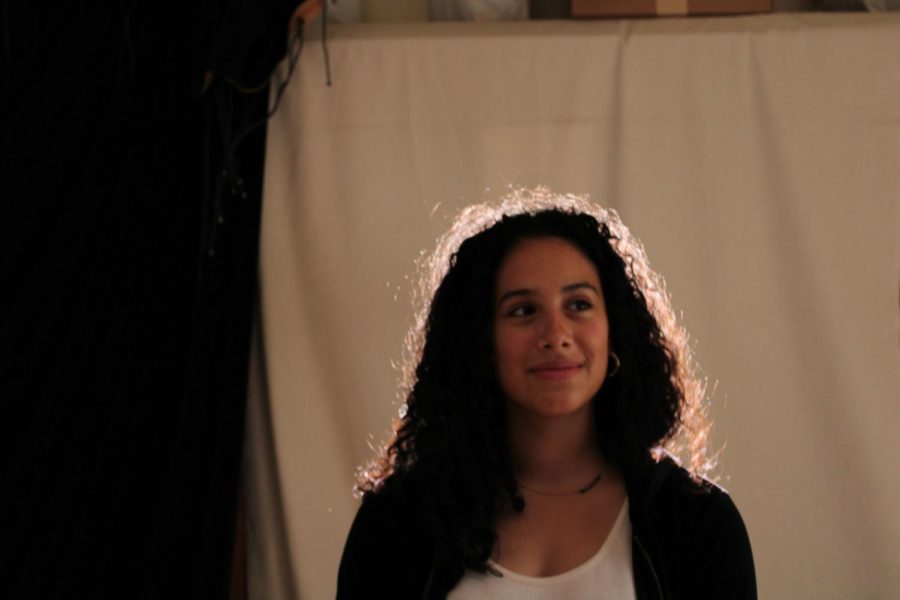Untangled
Embracing natural beauty despite the stigma surrounding textured hair
Hair is a natural component of the human body. Everyone has it, yet society deems some types of hair more beautiful than others, leaving others feeling self-conscious about their own hair. Glossy, pin-straight hair is favored over fluffy, textured curls. People whose hair does not fit this beauty standard are often unable to count on society’s acceptance for their hair type and must then find their own way to appreciate and love this part of themselves.
From TikTok hair tutorials to shampoo advertisements, the media has consistently perpetuated a Euro-centric beauty standard when it comes to hair.
“There are still a lot of people that think straight, blonde, shiny hair is what is beautiful, and not [any] other hair that you have,” senior Danica Wolf said.
According to Wolf, movies have also pushed the narrative of white beauty standards. With blond hair and blue eyes, the main character always has the classic features that society deems as beautiful.
“If you didn’t fit this one [beauty] standard, you were judged for it,” Wolf said.
Senior Jaelyn Mitchell believes that while beauty standards are becoming more diverse and inclusive of various hair types, there are still fractures within the curly hair community.
“[The beauty standard] is not just straight hair, we’re also starting to accept loose curls,” Mitchell said. “But we have to accept all curls and coils.”
Beauty standards that revolve around perfectly straight, white hair also leave no room for appreciation of other types of hair textures, leaving people of color with these hair types underrepresented and potentially feeling unseen.
“Generally, I feel like white people are pretty much the beauty standard, and there isn’t that much emphasis on people’s natural hair and the beauty of different textures,” junior Carter Blair said.
Having a different hair type can lead to hair discrimination, a concept known as texturism. As president of Paly’s Black Student Union (BSU), Blair notes that oftentimes, Black hair textures can bring unwanted attention.
“I’ve had days when my hair becomes more goofy, and I don’t blend in,” Blair said. “Wearing my natural hair makes me stand out, and some days, I don’t want to stand out.”
Texturism comes in various shapes and sizes, and is often directly associated with racism. People often limit a person’s hair to their ethnic and racial identity, to the detriment of the person in question.
“I know that when I was younger, my hair color, and [hair] texture contrasted with my paler skin, which made a lot of people question my ethnicity and race,” Blair said.
The reception that a person receives for their hair from their community and those around them can impact their own opinion of their hair, especially in children who have not yet developed a concrete identity.
“Growing up, a lot of kids, especially in Palo Alto, used to make fun of my haircuts and the way that my hair [stood] up because of my type of hair,” senior Jordan Fakatou said.
Even seemingly innocent ignorance can leave those with textured hair outside the ‘norm’ of having straight glossy hair, leaving some feeling ashamed.
“I would just shave [my hair] off because I would feel embarrassed by it,” Fakatou said. “When I would get braids, I felt embarrassed that people didn’t know what it was, and they would ask me questions about it.”
For senior Caeleigh Rich, her hair journey began in her middle school years, when she began to observe that the curly hair she and her friends had were different from what was seen as “the norm”.
“Middle school was when I saw a lot of my friends who had curly hair straighten it every single morning,” Rich said.
The negative associations that society assigns to hair different from the straight white standard leaves those without such hair feeling ashamed and out of place. But any action taken to combat negative feelings can amount to rejecting their natural hair.
“I think subconsciously when you hear [negative] stuff about your hair, or about any part of you, it’s not going to make you feel good,” Rich said.
It might be easy for those with hair that fits professionalism to dismiss those who feel pressured to alter their natural, textured hair as being needlessly insecure or self-intolerant.
This may be because the negative impacts of the existing straight white hair standard are much more visible to people with textured hair, who have to change their hair in order to be seen as desirable, conventionally attractive, or just “normal”.
“People are afraid to wear their natural hair because of professionalism standards, not looking similar to some of your peers, or not having your hair looking exactly how it looks on TV commercials,” Mitchell said.
As a Black child, Mitchell would look at white influencers on YouTube for hair inspiration. However, she found herself puzzled when the hairstyles she saw on her screen did not look the same on her hair.
“I thought that there was something wrong with my hair,” Mitchell said. “But in reality, we just had completely different hair textures, and there was nothing wrong with my hair.”
Throughout the years, Mitchell has come to learn that weighing yourself against others is unproductive, whether it has to do with hair or not.
“Not comparing myself to people that have completely different hair textures to me started my hair journey to make me feel more comfortable with my hair,” Mitchell said.
However, feeling comfortable with your own hair, although a beautiful sentiment, is easier said than done.
“[Accepting my hair] has definitely been a rocky journey,” Mitchell said. “But now, washing and detoxing my hair is part of my daily self-care routine.”
Due to the thick nature of Black hair, there is more versatility when it comes to styling.
“My hair can be all different types of things,” Mitchell said. “I have cornrows, but my hair can be straight. My hair can be curly, or I could have dreadlocks, or a wig, or a weave.”
The thickness and fragility of textured hair requires more time and effort to take care of compared to straight hair.
“It usually takes me about an hour and 30 minutes to wash my hair, and detangling it and then styling it is like another hour and 30 minutes,” Mitchell said. “Together, it usually takes three hours.”
The countless steps in Mitchell’s wash routine, while often tedious, have allowed her to develop a closer relationship with her hair and herself.
“Taking care of your hair is taking care of yourself,” Mitchell said.
While society has made some progress towards accepting all types of hair, microaggressions, while seemingly harmless, are still made and resonate with the person receiving them.
“People have asked ‘can I touch it’ or ‘your hair is so pretty, what are you mixed with,’” Mitchell said.
Accepting your natural hair is connected to making peace with yourself and your needs.
“Instead of trying to hide my hair, I realized I actually really like it,” Rich said. “I want to make it better and take better care of it.”
Hearing constant negative comments about her hair, Rich found it difficult to love herself, but as time passed, Rich has learned to push past other people’s opinions. However, hair acceptance is not always a linear journey.
“I’ve definitely had days where I just hate the way my hair looks and I’m just like ‘there’s nothing I can do to fix it,’” Rich said.
People with curly hair often have to overcome the stigma they may feel toward their hair. Once they embrace their hair, they can blossom.
“I definitely appreciate my hair a lot more [now] than when I was younger, it is a part of me,” Rich said. “I feel like it’s one of the first things people notice about me.”
Accepting your hair can encourage a willingness to experiment and explore its possibilities.
“I definitely recommend taking the time to get to know your hair because nobody’s hair is the same, and things are going to work for your hair that don’t work for everyone else’s,” Rich said.
While Fakatou was initially taken aback by the hair discrimination that he has experienced, he now aims to bring more acceptance and love towards natural hair.
“Just own your hair,” Fakatou said. “There’s nothing you can do to change your hair, and no matter what, there will always be people saying something.”
At the beginning of the COVID-19 pandemic, he founded his own hair-cutting business, where he focuses on empowering other curly-haired people.
“I have curly hair so I want to help [people with curly hair too] more,” Fakatou said. “I go out of my way to take care of their hair because I know what it’s like.”
People with curly hair types are presented with a choice: either keep their hair in a natural state and face potential judgment from society, or change themselves in order to escape criticism.
“I like my hair and I don’t want to have to change it because of other people’s opinions about it,” Wolf said.
Wolf strongly believes in staying true to yourself. Not giving in to peer pressure and keeping her hair in its natural form is her way of accomplishing that.
“You shouldn’t feel pressure to change your hair just because other people are,” Wolf said. “Especially because everyone’s hair is different, and if you know that’s not something you want to do, then just don’t do it.”
Naturally textured hair can be highly noticeable among a crowd, but unapologetically accepting these qualities makes a powerful statement.
“You standing out might make someone else want to stand out as well,” Mitchell said.
Different hair types can bring forth different experiences, but it is important to recognize the beauty in every person’s hair.
“All hair is beautiful,” Mitchell said. “[Whether it is] kinky, curly, straight, wavy, don’t be afraid to wear your natural hair.”
The empowerment of natural hair began during the Black Power movement in the 1960s and 1970s, when the afro rose in popularity. Black people began to reclaim this traditionally discriminated against hairstyle.
“I feel like in recent years it’s more acceptable to wear your hair in a natural state, but there are still lots of people who consider it unprofessional,” Blair said. “And by doing so, it’s almost like a movement.”
In today’s world, different instances of texturism have arisen. The Kardashian family has exploited Black culture countless times, including wearing box-braids without acknowledging the cultural significance of this hairstyle.
“It’s really important that people understand that their hair is part of their identity, even if it’s something that they feel embarrassed of,” Blair said.
Rewriting the hair narrative is a key component in empowering people with textured hair.
“I’ve come to learn and love the texture of my hair, and how to style it and make sure that it’s healthy,” Blair said.
The journey to being comfortable with one’s hair can take time, but that time is worth taking.
“Over time, I’ve learned to love and understand that standing out makes me special and makes me who I am,” Blair said.
Unconditional self-acceptance is something that everyone can strive for. Accepting the hair you were born with is a step closer to reaching that goal.
“It’s important to love every part of yourself,” Blair said. “That can mean taking time to learn how to do your hair, which brings you closer to a better version of yourself who is more in tune with your identity.”
Wearing hair in its natural state can be simply a matter of personal preferences, but it simultaneously carries a deeper meaning.
In a society that devalues “conventionally unattractive” hair types, being unconditionally comfortable with your hair is not just a healthy sign of self-worth but also a quiet protest against the current beauty standard.
“You’re saying that you accept yourself and this is who you are,” Blair said. “You shouldn’t have to change yourself to fit into a standard of what’s deemed as professional.”
Still, it is important to recognize the personal aspect, fulfillment, and sense of identity that hair acceptance can grant us all.
“[Your hair] is honestly not something that’s going to change,” Blair said. “By accepting your hair, you accept all of yourself.”


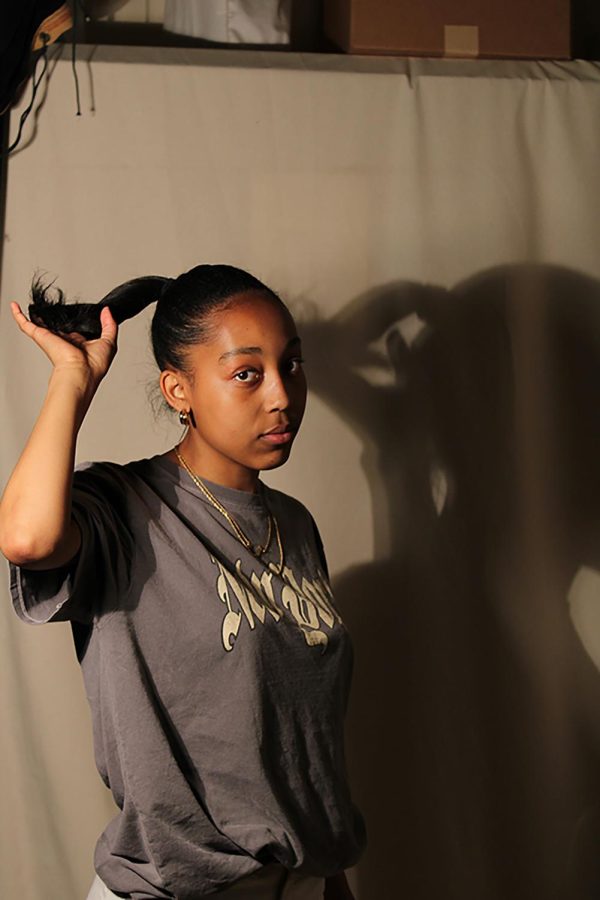

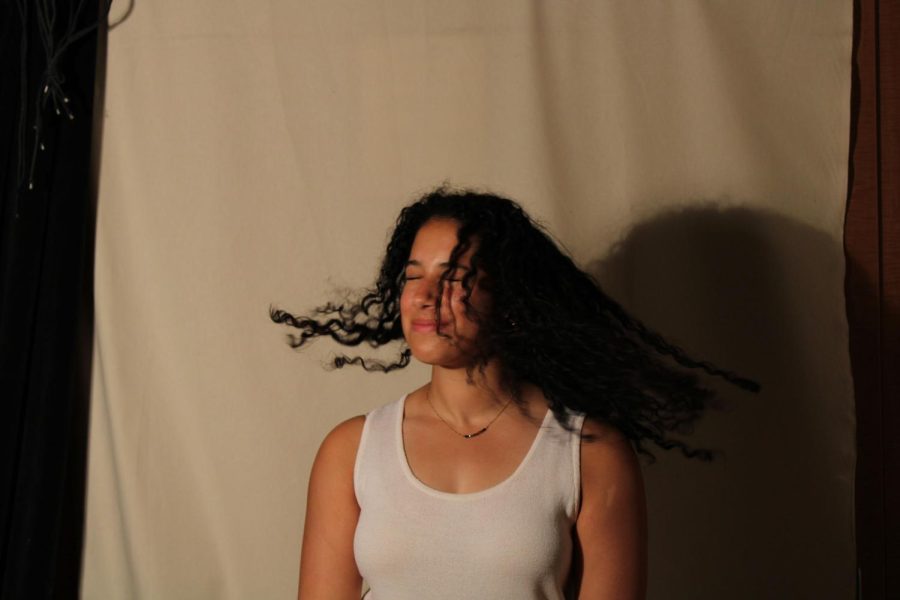
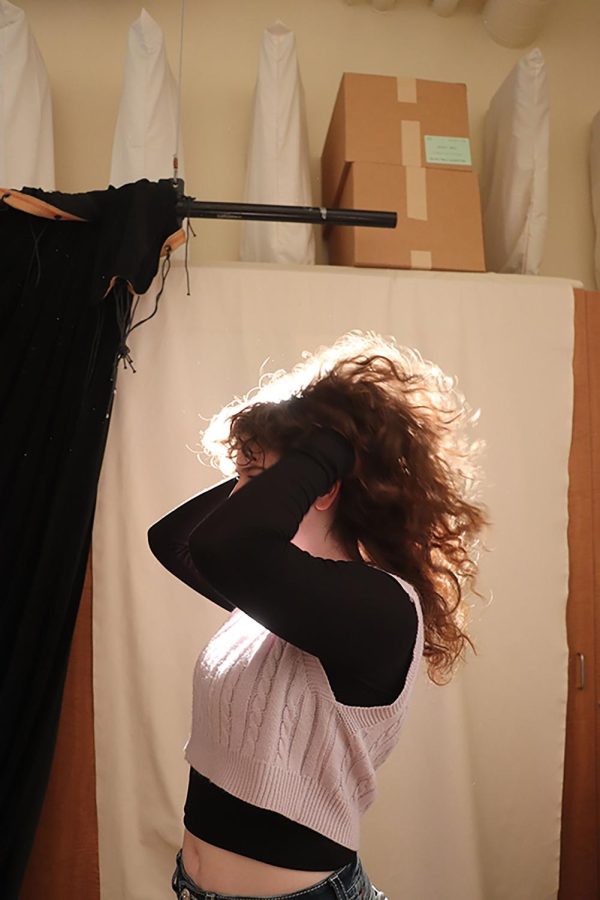
Photos by Kellyn Scheel
Print Issue
Please click on the three vertical dots on the top right-hand corner, then select “Two page view.”

2021-2022 - Staff Writer
2022-2023 - Online-Editor-In-Chief
I joined C Mag because I love art and music. I love C Mag's creative freedom. We get...
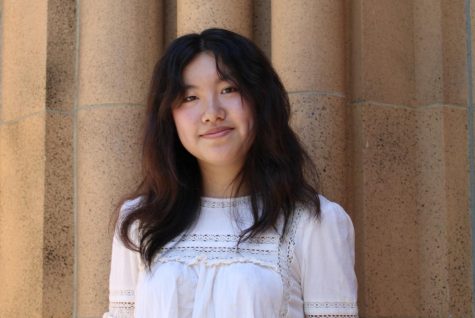
2021-2022 - Staff Writer
2022-2023 - Managing Editor
I joined C Mag because I love that journalism helps shine a light on issues that need addressing...
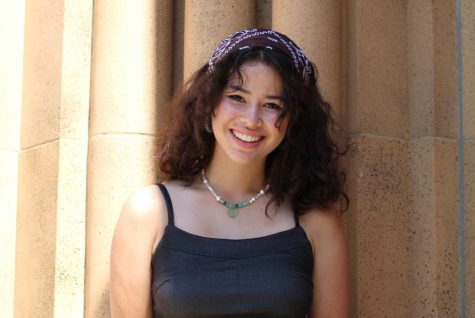
2021-2022 - Staff Writer
2022-2023 - Photo Director
Hey! I joined C-Mag because of my love for journalism, especially the creative aspect. My favorite...


